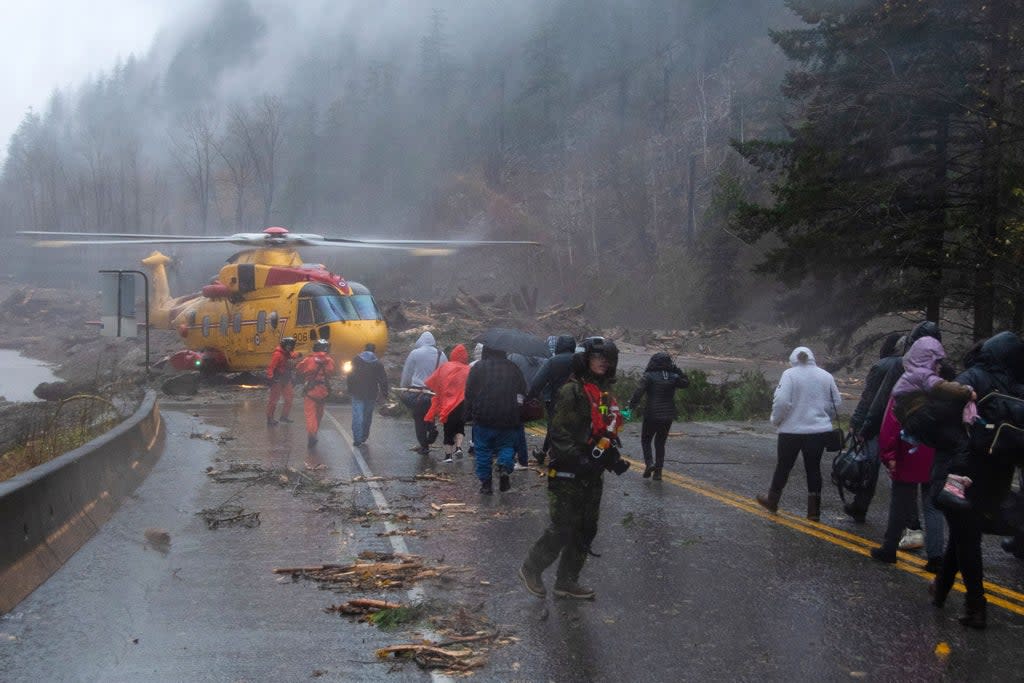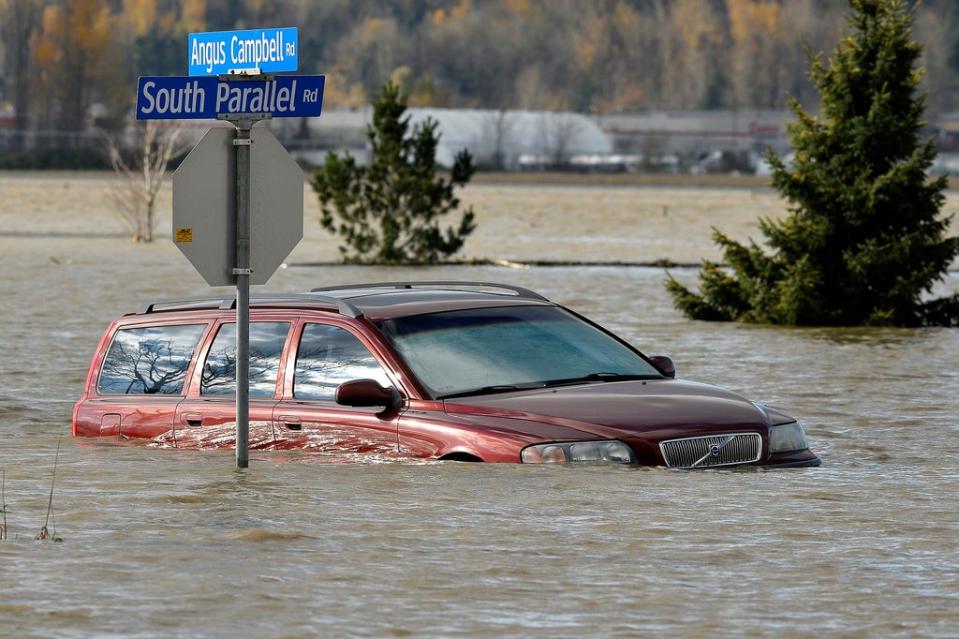Canada: Deadly storm declared ‘worst in a century’ as transport links cut to Vancouver

A deadly “once in a century” storm in Canada has killed at least one person, and severed road and rail links around Vancouver.
Two days of heavy rainfall across the Pacific province of British Columbia has led to flooding and landslides and shut down roads, prompting the evacuation of an entire town. The rains were caused by an atmospheric river, which are narrow paths of moist air that contain an excessive amount of water vapour.
A woman was killed in a highway landslide about 160km to the northeast of Vancouver. At least two others are missing.
Thousands of people were forced to leave their homes after the storm struck on Sunday. Rescue helicopters airlifted 275 people, including 50 children, from a section of highway blocked by landslides near the mountain town of Agassiz.
More than 7,000 residents of Merritt city, which is about 200km from Vancouver, were asked to evacuate on Monday after the river overflowed and cut off bridges, and forced the wastewater treatment plant to shut down. But some residents are still stuck in their homes on Tuesday, officials have said.
Chilliwack and Abbotsford towns have also ordered partial evacuations.
Rail access to the port of Vancouver was completely cut off by floods and mudslides. According to reports, the port moves about $440m (over £325m) worth of cargo every day.
“All rail service coming to and from the Port of Vancouver is halted because of flooding in the British Columbia interior,” port spokesperson Matti Polychronis said.
A portion of Coquihalla Highway, which connects Vancouver to interior areas, was severely damaged. The Trans-Canada Highway was also submerged in floodwater.
Here’s a further back view of the broken Coquihalla highway — you can see the place where it snapped off on the other side of this fast-moving river. #BCStorm #BCFloods #hopebc pic.twitter.com/YuI3ce7ub2
— Kamil Karamali (@KamilKaramali) November 16, 2021
Canada’s public safety minister Mike Farnworth said that in some cases such as Coquihalla, “it could be several weeks or months” before things return to normal. “We won’t know that until the experts do the work that needs to be done and they’re doing it right now,” he said.
He added that the province was considering imposing a state of emergency after the “once in a century” storm.
The floods temporarily shut down much of the movement of wheat and canola from Canada. The Trans Mountain pipeline, which carries up to 300,000 barrels per day of crude oil from Alberta to the Pacific Coast, was shut down.

Across the border in the US, more than 50,000 Washington state electrical customers remained without power on Tuesday. Schools in and around the border city of Bellingham were closed on Tuesday for the second day in a row.
In the northern Washington city of Ferndale, officials urged people to evacuate from areas near the rising Nooksack River, which they fear could breach the levee. Governor of Washington, Jay Inslee, declared a severe weather state of emergency in 14 counties.
This is the second large-scale catastrophic event that the country has witnessed in less than six months after wildfires gutted an entire town during a record-breaking heat dome.
Additional reporting by agencies
Read More
Northwest storm: 'Devastating' flood damage, 1 dead in BC
After record low, monarch butterflies return to California
At least 1 dead from mudslides in Canada after heavy rains
Canadian diagnosed as suffering from ‘climate change’
Afghan evacuees enjoy Albania but have eyes set on Canada
Anti-corruption party wins Bulgarian election, seeks reforms

